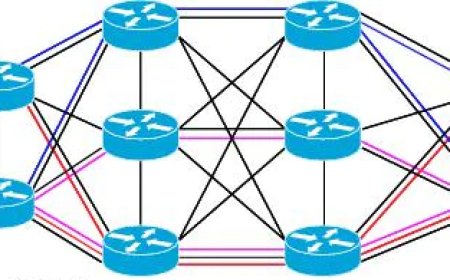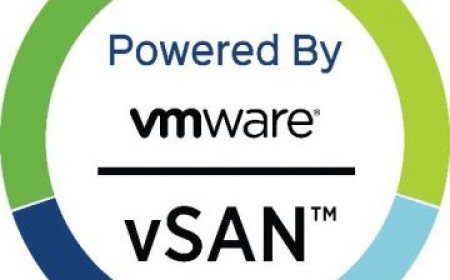Network Topologies Explained
Network topology refers to the structural arrangement of a network. This structure may be depicted physically or logically. Devices are depicted as nodes and the connections between the devices as lines to build a graphical model. So, a network topology means the manner in which a network is arranged, how the nodes are set up and connect to each other.

TYPES OF NETWORK TOPOLOGIES
- Start Topology:
A star topology is a type of network configuration in which all devices are connected to a central hub. The hub acts as a central point of communication, routing data between devices on the network.
Advantages:
-
- Easy to install and configure: since all devices connect to the central hub, it's easy to add or remove devices from the network.
- Easy to troubleshoot: if a device is not working properly, it can be isolated from the rest of the network by disconnecting it from the hub.
- Scalability: it's easy to expand the network by adding additional hubs.
- Reduced cable length: only the device needs to be connected to the central hub, which reduces the overall cable length required for the network.
Disadvantages:
-
- Single point of failure: if the central hub goes down, the entire network will be disconnected.
- Higher cost: the central hub and additional cabling required can make a star topology more expensive to implement.
- Limited transmission: if the hub has a limited transmission capacity, it can become a bottleneck that slows down the entire network.
- Bus Topology:
A bus topology is a type of network configuration in which all devices are connected to a single cable or bus. The cable acts as a backbone for the network, and data is transmitted along it in both directions.
Advantages:
- Simple and easy to set up: only one cable is required to connect all devices, making it a cost-effective solution for small networks.
- Easy to extend: more devices can be added to the network simply by connecting them to the bus cable.
- Reduced cable length: only one cable is required to connect all devices, reducing the overall cable length required for the network.
Disadvantages:
- Single point of failure: if the bus cable is damaged, the entire network will be disconnected.
- Limited cable length: the bus cable has a maximum length and if exceeded, it will require a repeater to extend it.
- Limited number of devices: the number of devices that can be connected to the bus is limited by the maximum transmission capacity of the bus cable.
- Difficult to troubleshoot: if a device is not working properly, it can be difficult to determine the cause of the problem.
Bus topology is not as popular as it used to be as it has many drawbacks and it is replaced by more reliable and fault-tolerant topologies such as star and ring.
- Ring Topology:
A ring topology is a type of network configuration in which all devices are connected in a circular configuration. Data is transmitted along the ring in one direction, with each device passing the data on to the next device in the ring.
Advantages:
- High reliability: if one device fails, the network will continue to function as data can be routed around the failed device.
- Data integrity: the data is transmitted in a specific order and any errors can be detected and corrected.
- Low collision domain: because data is transmitted in a specific order, there is less chance of data collision.
Disadvantages:
- Single point of failure: if the ring is broken, the entire network will be disconnected.
- Limited bandwidth: the entire bandwidth is shared by all devices connected to the ring, which can lead to slow data transfer rates.
- Limited scalability: adding new devices to the ring can be difficult, and it may require modification of the entire network.
- Difficult to troubleshoot: if a device is not working properly, it can be difficult to determine the cause of the problem.
Ring topology is not widely used in today's networks, It was used in some specific application like Token ring networks but it was replaced by more versatile and fault-tolerant topologies such as star and bus.
- Mesh Topology:
A mesh topology is a type of network configuration in which all devices are connected to every other device. This creates multiple paths for data to travel, providing redundancy and high reliability.
Advantages:
- High reliability: if one device or link fails, data can still be transmitted via alternative routes.
- High scalability: new devices can be added to the network without disrupting existing connections.
- High security: since data can be transmitted via multiple paths, it is more difficult for unauthorized users to intercept or disrupt the data transmission.
Disadvantages:
- High cost: due to the large number of connections required, a mesh topology can be expensive to implement and maintain.
- Complexity: configuring and troubleshooting a mesh network can be complex due to the large number of connections and routing protocols.
- High consumption of resources: a mesh network may consume a lot of bandwidth, processing power, and memory resources.
- Limited scalability: adding new devices to the mesh topology may require a lot of reconfiguration, which can be difficult and time-consuming.
Mesh topology is widely used in some specific application like wireless networks, and it is considered a robust and resilient topology. However, it requires high cost and maintenance, and it may not be practical for all types of networks.
- Tree Topology:
A tree topology is a type of network configuration that resembles a hierarchical tree, with a central hub (or root) and branches to other devices. The devices on the branches are connected to the central hub and to other devices on the same branch, creating a hierarchical structure.
Advantages:
- Scalability: it's easy to expand the network by adding new branches to the tree.
- Efficient data transmission: data is transmitted only to the devices that need it, reducing network congestion.
- Easy to troubleshoot: if a device is not working properly, it can be isolated from the rest of the network by disconnecting it from the branch.
Disadvantages:
- Single point of failure: if the central hub goes down, the entire network will be disconnected.
- Limited cable length: the length of the branches is limited and if exceeded, it will require a repeater to extend it.
- Limited transmission: if the hub has a limited transmission capacity, it can become a bottleneck that slows down the entire network.
- Complexity: adding new devices and branches to the tree can be complex, and the hierarchical structure of the network can make it difficult to troubleshoot.
Tree topology is a hybrid topology that combines the features of bus and star topologies. It is used in larger and more complex networks, and it is considered a scalable and efficient topology. However, it has some of the disadvantages of both bus and star topologies, which need to be considered before implementing it.
- Hybrid Topology:
A hybrid topology is a type of network configuration that combines two or more of the basic topologies (such as star, bus, ring, mesh, and tree) in order to create a network that is more flexible and adaptable to different requirements.
Advantages:
- Flexibility: a hybrid topology can be designed to meet specific needs and requirements, by combining the strengths of different topologies.
- Scalability: it's easy to expand the network by adding new devices and branches to the existing topology.
- High reliability: by combining different topologies, a hybrid network can be made more fault-tolerant and resilient to failures.
Disadvantages:
- Complexity: designing, configuring and troubleshooting a hybrid network can be complex due to the different topologies used.
- High cost: implementing a hybrid topology can be more expensive than using a single topology.
- Limited transmission: if the hub has a limited transmission capacity, it can become a bottleneck that slows down the entire network.
- Limited scalability: adding new devices and branches to the tree can be complex, and the hierarchical structure of the network can make it difficult to troubleshoot.
Hybrid topology is widely used in enterprise networks and service providers, which have different requirements and constraints. It is considered a flexible and resilient topology, but it requires high skill and maintenance, and it is not always the best solution for all types of networks.
CHOOSING THE RIGHT TOPOLOGY
-
Network size: the number of devices that will be connected to the network. For example, a small network with only a few devices may be best suited for a star or bus topology, while a large network with many devices may require a mesh or tree topology.
-
Network requirements: the specific needs and requirements of the network, such as high reliability, scalability, security, and cost. For example, a network that requires high reliability may be best suited for a mesh or ring topology, while a network that requires high security may be best suited for a star or tree topology.
-
Network environment: the physical environment in which the network will be deployed, such as a wired or wireless environment, and whether the network will be located in a single building or spread across multiple locations. For example, a wired network in a single building may be best suited for a bus or star topology, while a wireless network spread across multiple locations may be best suited for a mesh topology.
-
Network management: the availability of trained personnel, and the level of resources available for network management and maintenance. Some topologies like mesh and ring are complex and require high skill level of the network administrator.
So, the selection requires a careful evaluation of the specific needs and requirements of the network, and consideration of the trade-offs between different topologies.
NETWORK TOPOLOGY COST FACTORS
-
Hardware costs: the cost of the devices and equipment required to build the network, such as hubs, switches, routers, and cabling. Some topologies such as mesh and ring require more devices and equipment than others, which can increase the overall cost of the network.
-
Installation costs: the cost of installing the network, including the cost of labor, materials, and testing. Some topologies, such as mesh and ring, may require more complex installation and configuration, which can increase the overall cost.
-
Maintenance costs: the ongoing cost of maintaining the network, including the cost of troubleshooting, repairs, and upgrades. Some topologies, such as mesh and ring, may require more frequent maintenance and may be more difficult to troubleshoot, which can increase the overall cost.
-
Security costs: the cost of implementing and maintaining network security measures, such as firewalls, intrusion detection systems, and encryption. Some topologies, such as star and tree, may require more advanced security measures to protect the network from unauthorized access.
-
Scalability costs: the costs associated with expanding the network as the number of devices and users grows. Some topologies, such as mesh and tree, are more scalable than others, and may require less expensive upgrades to accommodate growth.
*** It's important to consider all the cost factors involved before choosing a network topology.
***** It's also important to consider that the initial costs may differ considerably from the long-term costs and this needs to be taken into account when comparing the different options.
What's Your Reaction?

























